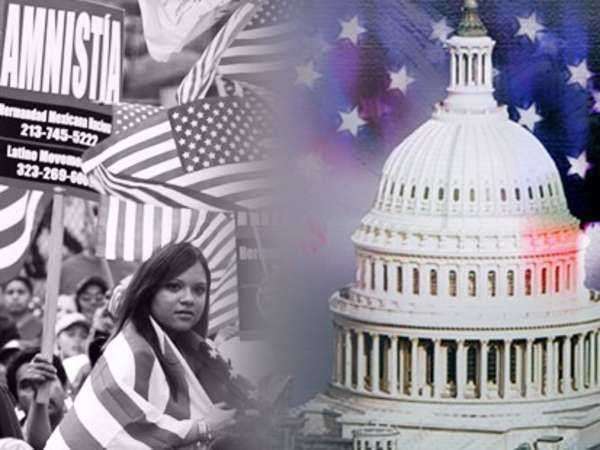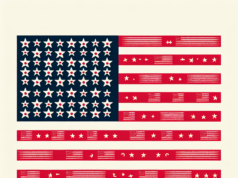
The National Origins Act: A Brief Overview and Legacy
The United States of America has been both a beacon of hope for immigrants and a place of exclusion. While the nation has attracted millions of people seeking democracy, freedom, and prosperity, it has also implemented policies designed to exclude certain groups based on race, ethnicity, or nationality. The National Origins Act is one such policy that left a lasting impact on American immigration and citizenship history. In this article, we provide an overview of the National Origins Act, its historical context, and its legacy.
Historical Context: Immigration and Race in America
The United States began as a country built on immigration, with waves of settlers, colonizers, and slaves coming from various parts of the world. However, as the country grew and expanded, so did the anxiety and hostility towards certain immigrant groups. The late 19th and early 20th centuries were marked by a surge of immigration from Southern and Eastern Europe, Asia, and Latin America, which prompted a wave of nativism, xenophobia, and racism.
The fear of becoming a minority in their own country fueled the rise of various anti-immigrant movements and policies. Some politicians and groups demanded a reduction or stoppage of immigration altogether, while others proposed selective or preferential immigration based on race, nationality, or religion. The National Origins Act is one such policy that reflected the anti-immigrant sentiments of its time.
Overview of the National Origins Act
The National Origins Act was a federal law that Congress passed in 1924 to restrict immigration to the United States based on nationality and race. The act established a quota system that limited the number of immigrants from each country to 2% of that country’s population in the U.S. as of 1890. The law also imposed an annual immigration ceiling of 150,000 people per year and excluded immigrants from Asia entirely.
The National Origins Act was a significant departure from previous immigration policies that had been more lenient or less discriminatory. The act effectively favorited immigrants from Northern and Western Europe, where most white Americans claimed their heritage, and discriminated against immigrants from Southern and Eastern Europe, Africa, and Asia, whom many considered to be inferior or problematic. The law also reflected the growing influence of eugenics and racial theories that advocated for the separation of races and the preservation of superior genes.
Legacy of the National Origins Act
The National Origins Act had several legacies that impacted American immigration and citizenship history. First, the law reinforced the racial hierarchy and discrimination of the time. By discriminating against certain groups based on race, nationality, and ethnicity, the law perpetuated inequality and prejudice and excluded many potential contributors to American society and culture.
Secondly, the National Origins Act created long-term consequences for American demographics and diversity. The law effectively froze the ethnic and racial composition of the U.S. in the early 20th century, excluding subsequent waves of immigrants who may have expanded or diversified the population. The law also contributed to the racial divisions and conflicts that persisted in the country, such as the segregation of Blacks and the internment of Japanese-Americans during World War II.
Finally, the National Origins Act inspired future immigration policies and debates. The act set the tone for the restrictive and discriminatory policies that followed, such as the Chinese Exclusion Act, the Immigration Act of 1965, and the current debates over illegal immigration and refugee resettlement. The National Origins Act served as a reminder of the tensions and challenges that come with immigration and citizenship and the need for a comprehensive, humane, and just approach to the issue.
Conclusion
The National Origins Act was a landmark immigration law that reflected the anti-immigrant, nativist, and racist sentiments of its time. The law effectively discriminated against certain groups based on race, nationality, and ethnicity and excluded many potential contributors to American society and culture. The law also created long-term consequences for American demographics and diversity and inspired future immigration policies and debates. The National Origins Act remains a cautionary tale of the dangers of immigration exclusion and the need for a fair, equitable, and inclusive immigration policy.
The National Origins Act of 1924 was a component of the Immigration Act of 1924 that established a quota system for determining how many immigrants could enter the United States, restricted by country of origin. Although the quota system established by this Act has been abolished and other provisions heavily modified by the Immigration Act of 1965, this Act represents a significant redesign of the American immigration system for several decades in the mid-20th century. The impetus to restrict immigration picked up steam in 1907 when the Dillingham Commission recommended restricting immigration from Southern and Eastern Europe, noting that immigration from those countries was “undesirable.”
National Origins Formula
The most important provision of the National Origins Act was the restrictive immigration quota system. The first quotas were established three years earlier, through provisions in the Emergency Quota Act that limited immigration from any country to 3% the number of residents originating in that country living in the United States. This Act caused immigration to drop by almost 500,000 persons between 1920 and 1922, primarily Southern and Eastern European immigrants. Nominal Latin American and African immigration, and the immigration of professionals however, were not restricted. The policy was renewed in the Immigration and Nationality Act of 1952, over presidential veto, before finally coming to an end in 1965.
Other provisions
The National Origins Act established a system of consular based immigration, which required immigrants
to have a visa issued by an American consular officer abroad before immigrating to the United States. This practice is still in use today.
No immigrant ineligible to for citizenship naturalization could immigrate to the US. Since Asian immigrants were ineligible for citizenship, this meant, in effect, that no Asians could immigrate to the US. Although provisions were made for family reunification, “picture brides,” which were the primary means for Asian women to immigrate to the US, was expressly disallowed. Distinctions between kinds of alien visitors, such as temporary visitors were also established by this legislation.
In practice
Although there were no racial restrictions in the National Origins Act of 1924, the nature of the quotas
ensured that limited numbers of certain Europeans and almost no Asians could enter the United States. The addition of the Asian Exclusion Act, which barred Asians from becoming naturalized citizens, shut the door on meaningful Asian immigration until 1965. If populations of those immigrants from undesirable nations were already small, then only a minuscule amount of additional immigrants from that country could join them. For example:
There are 1,000 immigrants from China living in the US. In reality, further Chinese would not be eligible for immigration due to naturalization laws, but if they were;
The National Origins Act limits additional immigration from all nations, including China to 2% of the number of Chinese Americans living in the US.
2% of 1,000 equals 20, which means that only twenty more persons from China could immigrate to the US. If
there were additional restrictions on new immigrants, such as literacy tests, that number may be lower.
Conversely, if there were 150,000 Americans of British descent, 3,000 more immigrants could join them.
This process effectively skewed the immigration system with the intention of keeping America’s ethnic
distribution consistent. The provisions were calculated and amended several times with the quota percentage reduced to 2% and the population numbers from 1890 to be used as a benchmark, restricting undesirable immigration even further.
Timeline
1907 – Dillingham Commission determines that immigration should be restricted to avoid undesirable elements from entering the United States, leading to the drive to establish limitation on Southern and Eastern European
immigration.
1921 – The Emergency Quota Act is the first to establish discriminatory quotas aimed at preserving the ethnic and racial composition of the United States. Limitations prevented newcomers from each country to 3% of that population in the United States according to numbers in the previous census.
1924 – Immigration Act/National Origins Act lowered the quota percentage to 2% and added provisions to limit total immigration to 150,000 yearly by 1927. Other provisions included using an earlier census to restrict new immigration by ethnicity even further, allow family reunifications and reducing the number of unskilled workers. The United Sates also switched to a consular-based immigration system that requires immigrants to obtain an
immigration visa from the US Consulate. Due to these changes, immigration from Italy fell almost 90% and some “undesirable” immigrant populations actually decreased.
1927 – Percentage quotas end in favor of a proportional system based on the United States population that allowed 150,000 immigrants into the US yearly. This took effect in 1929. This was just as restrictive as the previous system as “undesirable” immigrants were still subject to smaller numbers that Western and Northern European Immigrants.
1952 – Revised Immigration and Nationality Act continues National Origins Formula with proportional quotas but removes racial restrictions. Veto by President Truman overridden by Congress.
1965 – The immigration system, as defined by the National Origins Act, ends and discriminatory quotas are abolished. Immigration to the United States opened too all persons from all countries.



























